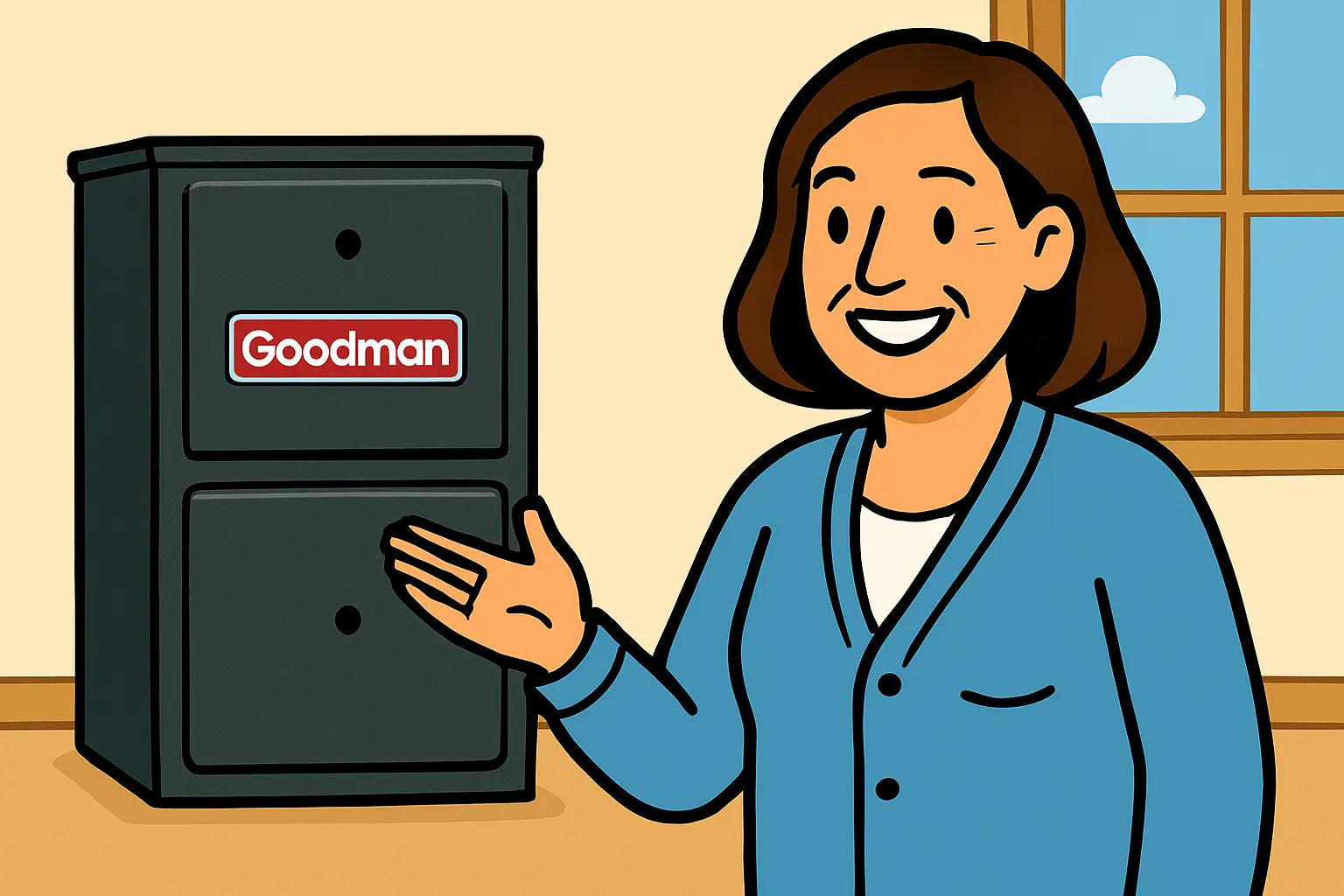Samantha’s Hello
Hey there, space-savers and comfort-lovers! Samantha here, your smart shopper and home-comfort confidante. 🏡🔥 If you’ve ever stared at your furnace room, closet, or crawlspace and thought, “How on earth is a full-size furnace supposed to fit in there?”—don’t panic. I’ve got you covered.
Today we’re diving deep into installing the Goodman GR9S920603BN furnace, specifically in those tight, awkward spaces where every inch matters. With its 17.5-inch cabinet, 92% AFUE rating, and smart single-stage design, this unit is tailor-made for homeowners who don’t have the luxury of a wide-open basement. I’ll walk you through prep, positioning, venting, hookups, and final checks—plus sprinkle in some of my signature hacks to make it easier (and safer).
Let’s roll up those sleeves and get this beauty humming!
Why the Goodman GR9S920603BN is Perfect for Tight Spaces
The beauty of the GR9S920603BN lies in its compact 17.5-inch-wide cabinet. That’s narrower than many mid-efficiency furnaces, making it a great candidate for closets, attics, and crawlspaces. Despite its slim frame, you’re still getting:
-
60,000 BTUs of heating power
-
A 9-speed ECM blower motor for smooth airflow
-
Upflow and horizontal installation options
-
Solid 92% AFUE efficiency
When compared to bulkier models, the space-saving design of this furnace can mean the difference between having to remodel a utility room and simply sliding it into place. If you want a full look at the product specs, you can find them right at The Furnace Outlet’s Goodman GR9S920603BN page.
Step 1: Pre-Installation Prep
Before you even think about unboxing this furnace, do a little homework:
-
Manual J Load Calculation – Sizing is everything. Too big, and the furnace will short-cycle; too small, and it’ll run nonstop. Learn more about why load calculations matter with ACCA’s guide on Manual J.
-
Measure Twice – Don’t assume. Measure the width, depth, and height of your installation space and compare it to the cabinet dimensions. Allow for service clearances too.
-
Code Compliance Check – Local building codes and manufacturer instructions are non-negotiable. If you’re unsure, check resources like HVAC.com’s installation tips to make sure you’re on track.
Step 2: Positioning the Furnace
Here’s where that 17.5-inch cabinet really shines. For narrow areas:
-
Upflow in a Closet: Perfect for small utility rooms, just ensure proper clearance at the front for servicing.
-
Horizontal in Crawlspaces: Lay it on its side if your ceiling height won’t allow upright installation.
-
Attics: Horizontal installs also work well here—just make sure to insulate properly to prevent heat loss.
Goodman provides detailed instructions for multiple positions in its official installation manuals. Always check the clearance to combustibles chart—it’s not just about fitting the furnace; it’s about fitting it safely.
Step 3: Venting and Combustion Air
Tight spaces often make venting tricky, but this furnace gives you options:
-
Direct Vent (two-pipe): Pulls combustion air from outside, ideal if your utility room is sealed tight.
-
Non-Direct Vent (one-pipe): Pulls air from indoors, which can work in slightly larger rooms with proper ventilation.
PVC venting is lightweight, affordable, and easier to maneuver through walls in tight layouts. Be sure to maintain proper slope on horizontal runs so condensate drains correctly. A handy reference is HVAC Direct’s service manual PDF, which outlines venting best practices.
Step 4: Gas, Electrical, and Drain Connections
This is where things get hands-on.
-
Gas Line: Install with a shut-off valve that’s easy to access, even in a cramped closet.
-
Electrical: Follow NEC guidelines for grounding and circuit protection. In tight areas, flexible conduit helps avoid awkward bends.
-
Condensate Drain: Tight spaces can complicate condensate flow. Always run the line downhill and insulate it in unconditioned spaces to prevent freezing.
Step 5: Final Checks & Start-Up
Once everything is connected, it’s time for a careful start-up:
-
Power on the furnace and check diagnostic LED lights. The built-in board will flag issues right away.
-
Confirm temperature rise is within Goodman’s specifications.
-
Test airflow across the 9-speed blower by cycling the thermostat.
If the furnace throws a code, don’t panic. Troubleshooting resources like HVAC Optimizer’s Goodman troubleshooting guide can help you interpret those flashes.
Samantha’s Tight Space Hacks
-
Label Everything: In cramped installs, label gas valves, breakers, and even wiring connections. Future you will thank you.
-
Leave Service Access: Even in small closets, make sure the front panel can be removed fully.
-
Compact Duct Transitions: Use short-radius elbows or offset transitions to maximize airflow without hogging space.
-
Plan for Filter Changes: Position it so you can easily slide out the filter without contorting like a gymnast.
Common Mistakes to Avoid
-
Blocking Vent Terminations: Snow drifts or clutter near the vent can starve the furnace.
-
Improper Clearance: Always respect the clearance to combustibles.
-
Skipping Leveling: If the furnace isn’t perfectly level, condensate can pool and cause corrosion.
Samantha’s Goodbye
And there you have it—your step-by-step guide to installing the Goodman GR9S920603BN in tight spaces. With the right prep, positioning, and a little bit of planning, this slim furnace can slide into your narrowest spots and deliver serious comfort.
If you’re ready to check it out for yourself, you can find all the details on the Goodman GR9S920603BN product page.
Curious about what homeowners save with this unit? Visit: Understanding the 92% AFUE Rating on the Goodman GR9S920603BN.
Stay savvy, stay warm, and remember—small spaces don’t mean small comfort.
- Samantha out! ☕🔥







